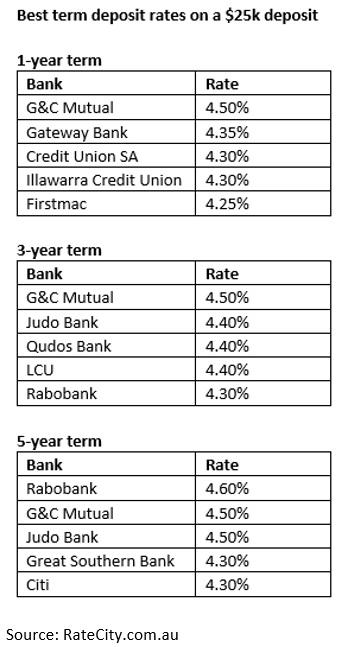Term deposit rates rise, but savers need to shop around
As speculation builds that official interest rates are close to peaking, investors may be thinking about locking into a longer term deposit. With the gap widening between the lowest and highest available deposit rates, shopping around for the most attractive term deposit rates will pay off for savers.
The Reserve Bank of Australia increased the cash rate for the eight consecutive month in December to 3.1 per cent. Since the cycle of rate rises began in May, the big banks have followed suit by raising interest rates on term deposits; as a result, investors are finally able to enjoy better yields after years of almost no return on their money.
And the good news is that term deposit rates could keep on climbing.
“No one knows exactly how many RBA hikes it will take to bring inflation back into line,” said Sally Tindall (pictured, left), research director at RateCity. “However, there is likely to be at least one [more], but potentially as many as four more hikes in 2023.
“That said, plenty of economists are predicting rate cuts within the next 12 to 24 months. so this could mean some of the longer term deposits come out ahead in the wash – although it’s hard to say with any degree of certainty.”
According to RBA data, the average annual interest rate on banks’ one-year term deposits in December was 2.85 per cent, and the average rate on three-year deposits was 3.2 per cent – both the same as in October 2022, despite two official rate rises in that time. The six-month average term deposit rate from the big banks was just 1.8 per cent.
According to Alison Banney (pictured, right), money expert at Finder, savers often get a higher rate on longer term deposits, but they need to make sure they can afford to lock their money up, otherwise they may be penalised by losing interest.
“You’ll often get a higher rate on longer term lengths, but make sure you’re confident you won’t want to withdraw the money early,” Banney said.
“If you do, you’ll usually have to pay an early break fee or forfeit a lot of your interest,” she said. “If you don’t want to lock your money away, a savings account could be a better option for you, as long as you can meet the account conditions.”
Research the best rate
Whether a saver opts for a short or a longer term deposit, shopping around is essential, Tindall said. “The gap between the lowest and the highest savings account interest rates widens with every RBA hike as the big banks pick and choose which savings accounts get a boost and which miss out,” she said.
“This means savvy savers can now get ongoing savings rates over 4.5 per cent, yet complacent ones could still be earning less than 1 per cent,” she added. “Savings customers should aim for an ongoing rate that’s above the current cash rate, at an absolute minimum. Anyone earning less than this is being taken for a ride.”
In considering longer maturing term deposits, savers also need to be aware they are locking in their money for a fixed period; if deposit rates were to rise during that period, the investor wouldn’t benefit, whereas a person with money invested in a savings account would.
“If you’re a regular saver who is happy to jump through a few hoops each month, then a high-interest bonus saver account could be a good option for you,” Tindall said.
“However, if you’ve got a lump sum you aren’t likely to be adding to for a while and can’t be bothered with the hullabaloo of meeting monthly conditions, then a term deposit or a no-frills savings rate might be a better path.”
Another option open to savers is to ladder investment amounts and keep term deposits to short staggered periods. This allows savers to invest in new term deposits at regular intervals, so they can take advantage of any future rise in interest rates without committing all of their money to a single term deposit for several years.
When the expiry of each term deposit is reached, savers can take advantage of potentially more attractive interest rates, which may also appeal to those who need to access their money.
The charts below detail some of the best term deposit rates currently available.












